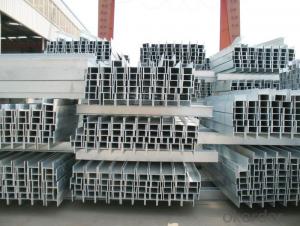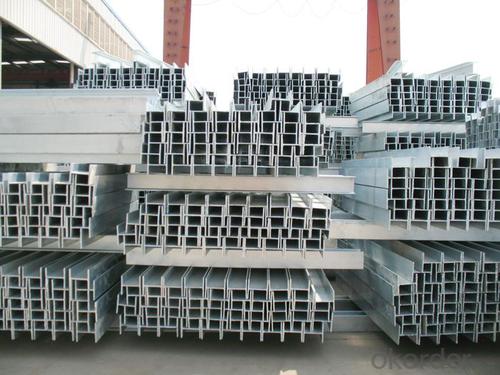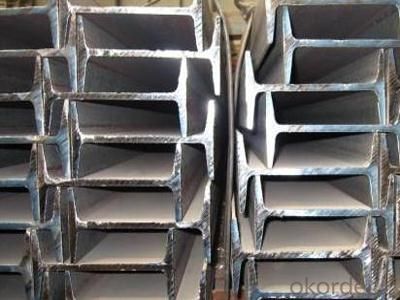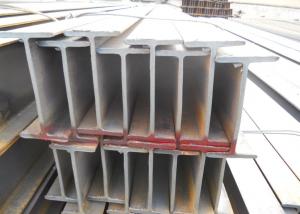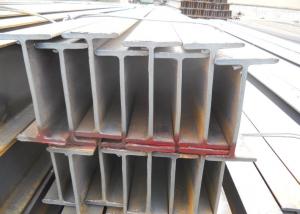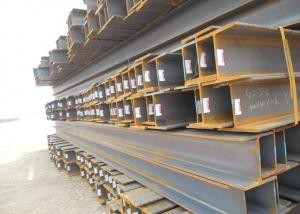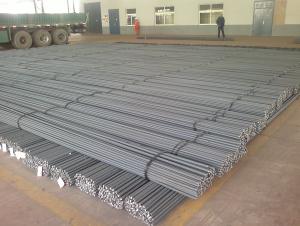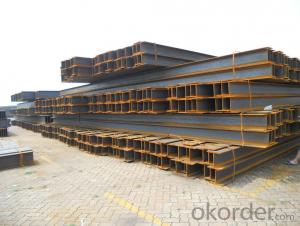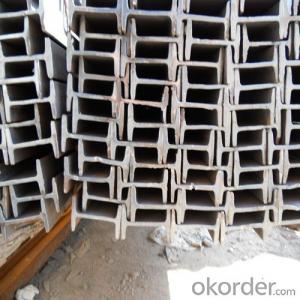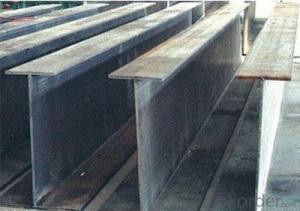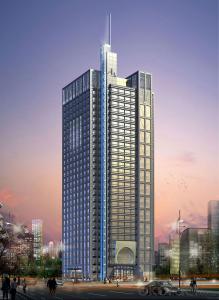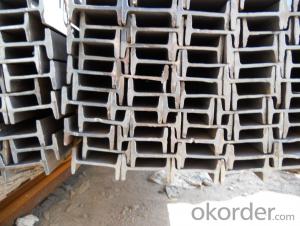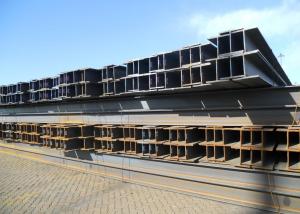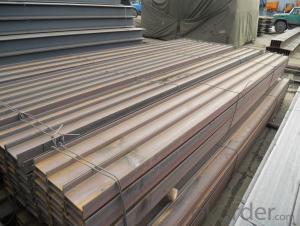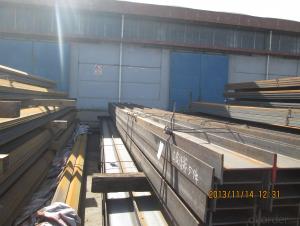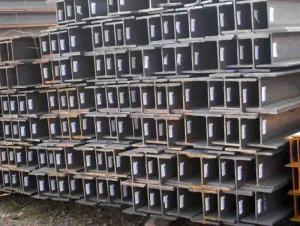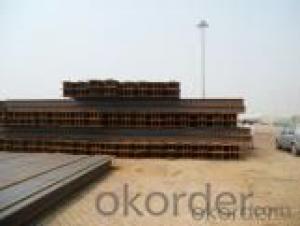Thin steel H BEAM for construction Equivalent
- Loading Port:
- Tianjin
- Payment Terms:
- TT or LC
- Min Order Qty:
- 25 m.t
- Supply Capability:
- 100000 m.t/month
OKorder Service Pledge
OKorder Financial Service
You Might Also Like
Product Description:
OKorder is offering thin steel H BEAM for construction Equivalent at great prices with worldwide shipping. Our supplier is a world-class manufacturer of steel, with our products utilized the world over. OKorder annually supplies products to European, North American and Asian markets. We provide quotations within 24 hours of receiving an inquiry and guarantee competitive prices.
Product Applications:
Thin steel H BEAM are ideal for structural applications and are widely used in the construction of buildings and bridges, and the manufacturing, petrochemical, and transportation industries.
Product Advantages:
OKorder's steel H BEAM are durable, strong, and resist corrosion.
Main Product Features:
· Premium quality
· Prompt delivery & seaworthy packing (30 days after receiving deposit)
· Corrosion resistance
· Can be recycled and reused
· Mill test certification
· Professional Service
· Competitive pricing
Product Specifications:
Manufacture: steel H BEAM
1. Standard: JIS 3192
2. Grade: SS400 or Equivalent
3. Length: 10m, 12m as following table
4. Invoicing on theoretical weight or actual weight as customer request
5.Payment: TT or L/C
Packaging & Delivery of Hot Rolled H-Beam Steel for Building Structures
1. Packing: it is nude packed in bundles by steel wire rod
2. Bundle weight: not more than 3.5MT for bulk vessel; less than 3 MT for container load
3. Marks:
Color marking: There will be color marking on both end of the bundle for the cargo delivered by bulk vessel. That makes it easily to distinguish at the destination port.
Tag mark: there will be tag mark tied up on the bundles. The information usually including supplier logo and name, product name, made in China, shipping marks and other information request by the customer.
If loading by container the marking is not needed, but we will prepare it as customer request.
4. Transportation: the goods are delivered by truck from mill to loading port, the maximum quantity can be loaded is around 40MTs by each truck. If the order quantity cannot reach the full truck loaded, the transportation cost per ton will be little higher than full load.
5. Delivered by container or bulk vessel
FAQ:
Q1: What makes stainless steel stainless?
A1: Stainless steel must contain at least 10.5 % chromium. It is this element that reacts with the oxygen in the air to form a complex chrome-oxide surface layer that is invisible but strong enough to prevent further oxygen from "staining" (rusting) the surface. Higher levels of chromium and the addition of other alloying elements such as nickel and molybdenum enhance this surface layer and improve the corrosion resistance of the stainless material.
Q2: Can stainless steel rust?
A2: Stainless does not "rust" as you think of regular steel rusting with a red oxide on the surface that flakes off. If you see red rust it is probably due to some iron particles that have contaminated the surface of the stainless steel and it is these iron particles that are rusting. Look at the source of the rusting and see if you can remove it from the surface.
Images:

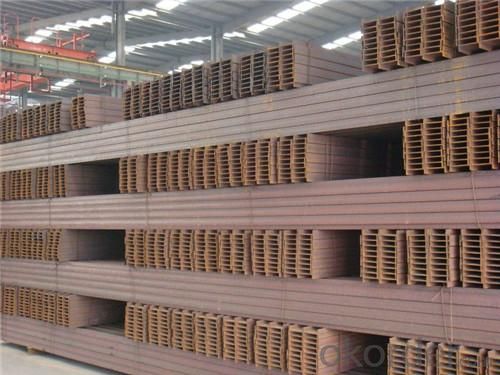
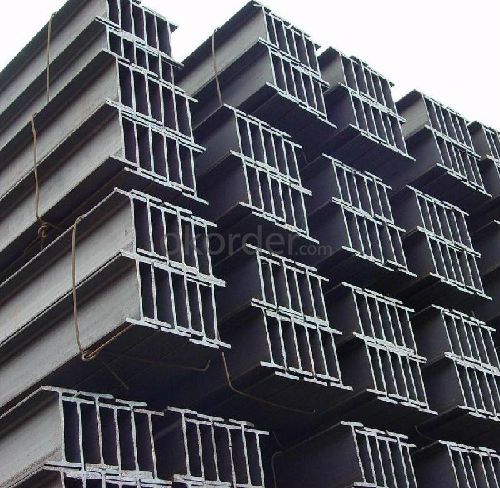
- Q: Can steel H-beams be used for educational buildings?
- Yes, steel H-beams can be used for educational buildings. Steel H-beams are commonly used in construction due to their structural integrity and strength. They provide excellent support and can withstand heavy loads, making them suitable for educational buildings that may have multiple floors or large open spaces. Additionally, steel H-beams are fire-resistant, which is an important safety feature for any building, especially educational facilities. Furthermore, steel is a durable material that requires little maintenance and can withstand harsh weather conditions, ensuring the longevity of the educational building. Overall, steel H-beams are a reliable and versatile choice for constructing educational buildings.
- Q: Are steel H-beams suitable for mezzanine flooring?
- Steel H-beams are widely used for mezzanine flooring because of their strength, durability, and load-bearing capacity. Mezzanine floors are typically installed in industrial or commercial settings to add more usable space to a building. Steel H-beams offer excellent structural support and can withstand heavy loads, making them suitable for supporting the weight of the mezzanine flooring, as well as any equipment or materials placed on it. Moreover, steel H-beams can be easily customized to meet specific design requirements and seamlessly integrated with other structural elements of the mezzanine system. In summary, steel H-beams are a dependable and practical choice for mezzanine flooring.
- Q: Are steel H-beams compatible with different types of roofing materials?
- Yes, steel H-beams are compatible with different types of roofing materials. Steel H-beams are commonly used in construction to provide structural support for roofs and other load-bearing applications. They are designed to be versatile and can accommodate a wide range of roofing materials, including but not limited to metal, asphalt shingles, clay tiles, slate, and concrete. The strength and durability of steel H-beams make them suitable for supporting the weight of various roofing materials, ensuring a stable and secure structure. Additionally, steel H-beams can be easily customized and adapted to different roof designs and configurations, allowing for flexibility in choosing the most suitable roofing material for a particular project. Overall, steel H-beams provide a reliable and compatible option for supporting different types of roofing materials in construction.
- Q: Can steel H-beams be used in the construction of agricultural buildings?
- Agricultural buildings can utilize steel H-beams for their construction. These beams are widely favored in the construction industry due to their strength, durability, and versatility. They possess exceptional load-bearing capacity, which enables them to support the weight of the building and any additional equipment or machinery stored within. Moreover, steel H-beams are resistant to rot, pests, and fire, making them highly suitable for agricultural buildings that may face harsh environmental conditions. What's more, these beams can be easily fabricated and customized to precisely fit the specific requirements of the agricultural structure, ensuring optimal structural integrity. Overall, steel H-beams provide numerous benefits for agricultural construction projects, which is why they are highly preferred by architects, engineers, and farmers.
- Q: Are steel H-beams suitable for use in the construction of residential houses?
- Yes, steel H-beams are suitable for use in the construction of residential houses. They provide excellent structural support, are durable, and can withstand heavy loads. Additionally, their versatility allows for flexibility in architectural designs, offering homeowners a wide range of possibilities.
- Q: What are the requirements for steel H-beams in areas with heavy snowfall?
- In areas with heavy snowfall, the requirements for steel H-beams primarily focus on their structural integrity and load-bearing capacity to withstand the weight of accumulated snow. These requirements include: 1. Snow Load: The first consideration is the anticipated snow load in the specific area. The snow load is typically determined by local building codes or engineering standards and is expressed in pounds per square foot. The H-beams must be designed to support this snow load without excessive deflection or failure. 2. Material Strength: Steel H-beams used in heavy snowfall areas should have a high yield strength to withstand the increased load. The material used should have a minimum specified yield strength, such as ASTM A992 or equivalent, which ensures the beam's ability to resist bending and deformation under heavy snow loads. 3. Design Factors: The design of H-beams should consider additional factors such as safety margins, environmental conditions, and potential snow accumulation patterns. Structural engineers typically apply various design factors to account for uncertainties and ensure a reliable and durable structure. 4. Span Length and Section Dimensions: The span length of the H-beams, i.e., the distance between supports, should be determined considering the anticipated snow load. Longer spans may require larger section dimensions or additional support structures to prevent excessive deflection or failure. 5. Connections and Joints: The connections between H-beams and other structural elements should be appropriately designed and reinforced to withstand the snow load. Welding, bolting, or other connection methods must be chosen based on the specific requirements and engineering standards. 6. Maintenance and Inspection: Regular maintenance and inspection of steel H-beams are crucial in heavy snowfall areas. This includes removing any accumulated snow or ice, identifying any signs of corrosion or damage, and ensuring proper drainage to prevent ice dams or additional snow accumulation. It is important to consult with a qualified structural engineer or follow local building codes and regulations to determine the specific requirements for steel H-beams in areas with heavy snowfall. Additionally, local climate and snowfall patterns may vary, so a customized approach may be necessary to ensure the safety and reliability of the structure.
- Q: What does "H400*250*8*12" mean in steel structures?
- A direct consequence of low industrial concentration is caused by excessive competition, in 2005, the average profit of 5% steel enterprises, in addition, steel tube truss and complicated structure, difficult construction of landmark projects to higher profit margins, as building light steel portal frame, due to intense competition, the profit space is generally low, so only there are some enterprises in order to steal frugal material bidding, so only the sensation of three-dimensional "white paper". But the good news is the processing capacity of 13 million 510 thousand tons of steel structure steel structure association in 2005 statistics, the processing capacity of the top five steel enterprises has more than 1 million tons, the annual top ten enterprises the basic processing capacity in more than 100 thousand tons.
- Q: What is the weight bearing capacity of steel H-beams?
- The weight bearing capacity of steel H-beams can vary depending on various factors such as the specific size and shape of the beam, the grade of steel used, and the structural design of the building or structure in which the beams are being used. In general, steel H-beams have a high load-carrying capacity due to their shape and the strength of the steel material. They are commonly used in construction projects to support heavy loads and provide structural integrity. However, it is important to consult engineering specifications and calculations to determine the exact weight bearing capacity of steel H-beams for a specific application.
- Q: Can Steel H-Beams be used in retrofit or renovation projects?
- Certainly, retrofit or renovation projects can make effective use of steel H-beams. These beams are frequently employed in construction due to their exceptional strength, durability, and versatility. During the renovation or retrofitting process, H-beams are often utilized to provide supplementary support or reinforcement to existing structures. They may replace or fortify beams, columns, or other load-bearing components in a building, thus ensuring the structural integrity of the renovated or retrofitted structure. Moreover, H-beams are capable of creating new structural elements like mezzanines, balconies, or platforms in retrofit or renovation projects. Their capacity to bear heavy loads and evenly distribute weight makes them an ideal choice for such applications. All in all, steel H-beams are extensively used in retrofit or renovation projects in order to enhance the strength and stability of existing structures.
- Q: Are steel H-beams suitable for use in the construction of hospitality resorts or hotels?
- Yes, steel H-beams are suitable for use in the construction of hospitality resorts or hotels. Steel H-beams offer several advantages that make them the preferred choice for construction in the hospitality industry. Firstly, steel H-beams have high strength and durability, making them capable of supporting heavy loads and providing structural stability. This is crucial for large-scale construction projects such as hospitality resorts or hotels, which often require multiple floors, large open spaces, and the ability to withstand potential natural disasters like earthquakes or hurricanes. Additionally, steel H-beams are lightweight compared to other construction materials, such as concrete or timber, which makes them easier to transport and handle during the construction process. This can lead to cost savings and faster construction times, which are essential factors in completing hospitality projects on time and within budget. Moreover, steel H-beams offer design flexibility, allowing architects and engineers to create innovative and visually appealing structures. They can be used to create large, open atriums, spacious ballrooms, and other unique architectural features that are often found in hospitality resorts or hotels. Another advantage of steel H-beams is their resistance to fire, pests, and rot. This ensures the long-term durability and safety of the structure, reducing maintenance and repair costs over time. Lastly, steel H-beams are environmentally friendly as they are typically made from recycled materials and can be recycled again at the end of their life cycle. This aligns with the growing trend of sustainable and eco-friendly construction practices in the hospitality industry. In conclusion, steel H-beams are highly suitable for use in the construction of hospitality resorts or hotels due to their strength, durability, design flexibility, fire resistance, and environmental benefits. They provide a reliable and efficient solution for constructing large-scale projects in the hospitality sector, ensuring the safety, comfort, and satisfaction of guests.
Send your message to us
Thin steel H BEAM for construction Equivalent
- Loading Port:
- Tianjin
- Payment Terms:
- TT or LC
- Min Order Qty:
- 25 m.t
- Supply Capability:
- 100000 m.t/month
OKorder Service Pledge
OKorder Financial Service
Similar products
Hot products
Hot Searches
Related keywords
